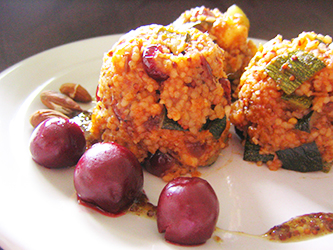
3 August 2016 - In the previous article of this series, we detailed publicly available avenues that Hong Kongers can explore when it comes to recycling. In this article, we continue the theme of living a sustainable lifestyle in HK, outlining the ways in which we can reduce the amount of waste we produce when it comes to food. Food waste is one of the largest contributors to human induced climate change, with organic matter in landfills contributing to 20% of all methane gas emissions. In Hong Kong, of the estimated 9,278 tons of waste deposited at our local landfills on a daily basis, approximately 36% (3,337 tons) consists of food waste, equating to the largest waste category by far. If we all do our part, we can make a difference in reducing this number – so read on for some tips!
Buying Smart

How do we go about reducing our food waste? For starters, we can reduce the amount of food that we buy and consume. The average male adult needs roughly 8,700 kilojoules (approximately 2,078 calories) on a daily basis. To reduce the amount of food waste you produce, make sure to plan your grocery lists so that the food you buy is just enough to sustain your body and lifestyle, and can be realistically consumed before its expiry date. Prior to writing your list, remember that the aforementioned number relates to the average adult male. Click here to calculate your specific recommended daily calorie intake.

Storing Smart
The following situation has happened to everyone: you buy some food, put it in the fridge, and before you even realize it, the food has gone bad. Fridges need to be correctly organized in order to get the most mileage out of them when it comes to preserving your food. Nicholas Toulouse from Food Republic.com states that the way that fridges are designed means that different foods should be placed in different parts. To elaborate, most fridges are built such that the cold air emanates from the top, making the bottom drawers comparatively warmer to shelves higher up. In addition, you want to stock your fridge such that it is between a state of full and empty to optimize cold air circulation. This means that you want to organize your food products based on whether or not they need the colder air to last longer. For instance, Toulouse recommends that dairy products and drinks be placed at the top of the fridge near the source of cold air, while meats and fish should occupy the middle shelves. Click here for a more detailed visual on fridge organization, and be sure to check out heart.org’s guide on how to ensure your fruits and vegetables last as long as possible.

Recycling Leftovers
So you made a detailed meal plan, you optimized your food storage, but you did not feel that hungry today and there were some leftovers. The first thing you can do is to store them to use as ingredients for future meals. One of the biggest problems that people face when it comes to using leftovers is that they cannot recreate the same meal the leftovers originated from with the remaining bits and pieces, and as such find no real reason to keep them. If you find yourself with leftovers on a somewhat regular basis, you can mix and match items from different dishes and create all new recipes, getting the most value for your money when thinking about your food purchases. For some ideas, check out allrecipes.com's recipes here for everyday leftovers.

Government Initiatives
With the government recognizing that the current food waste situation “is not sustainable and environmentally undesirable”, it has decided to develop several programs aimed at reducing the amount of organic waste in landfills. Currently, there are a number of Organic Waste Treatment Facilities (OWTF) being built, the purpose of these facilities is to recycle organic waste into useful products, such as biogas as a renewable energy resource. There are plans to construct three of these facilities, of which the first facility is undergoing construction in Siu Ho Wan, and is estimated to be in service in 2017.
We hope that some of the tips in this article were helpful. Bear in mind that the methods covered so far are not the only ways you can live sustainably in Hong Kong, so be sure to stay tuned for future articles on going green at home.





